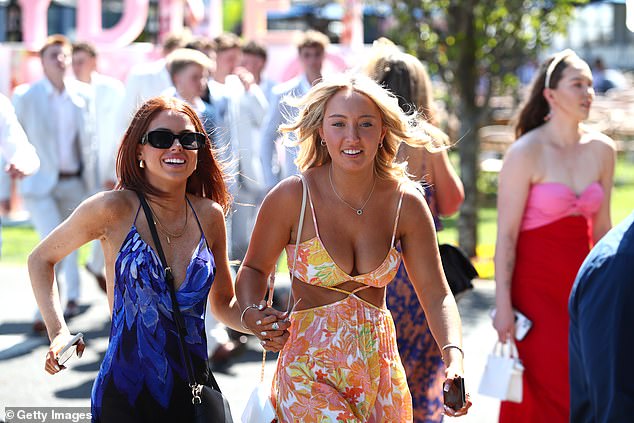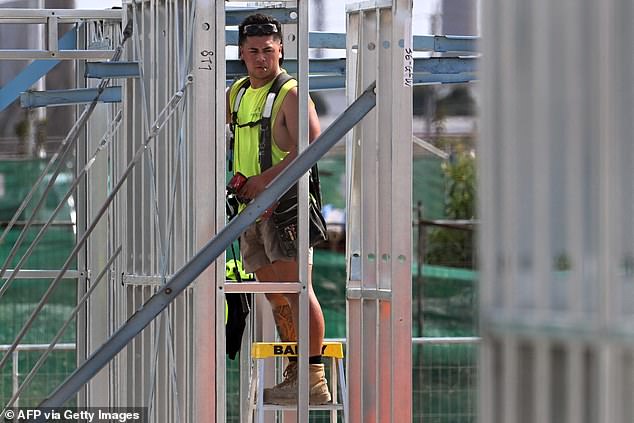The surprising myth about Australia’s housing crisis revealed – and what you really need to earn now to buy a typical home
Men are more likely than women to lose out on home ownership as Australia’s affordability crisis worsens, new data shows.
Women in relationships are also more likely to be homeowners in Australia following the sharp increase in house prices over the past year.
Single men across all age groups are less likely to have bought a home themselves, but younger women have much more difficulty than younger men getting onto the property ladder.
A typical Australian home now requires a person to earn $118,000 a year, making property ownership impossible unless a borrower purchased it with a partner or earned a particularly high salary.
Property data group CoreLogic found that 68.2 percent of women across all age groups owned at least one property, compared to 67.4 percent for men.
“The high-level data shows promising equity in home ownership in Australia, where residential property is a key driver of prosperity, and has implicitly become an essential part of a comfortable retirement,” the Women and Property report said.
Men are more likely than women to miss out on owning their own home as Australia’s affordability crisis worsens, new data shows (pictured is an auction in Sydney)
‘The research also shows that women generally attach more importance to home ownership than men.’
But the majority of women who owned property had bought jointly with someone else, mainly a husband or boyfriend, and 53.9 percent of them had bought in partnership.
In comparison: 51.2 percent of men had purchased something together with someone else.
Of the properties women owned jointly with someone else, 81.8 percent did so with a husband or boyfriend, compared to the 14.5 percent who bought with their wife or girlfriend in a same-sex relationship.
“This meant that one in eight joint home and property owners co-owned a home with a same-sex partner,” the CoreLogic report said.
When it came to owning at least one property, 50.2 percent of women had done so, compared to 51.9 percent of men.
Women under the age of 30 were more likely to rely on their loved ones for housing, with 39.7 percent living with family or friends without paying rent or board, compared to 37.6 percent who rented.
Of women born after 1994, only 27.3 percent owned an investment property that was rented out, compared to 51.6 percent of men.
But when it came to Generation Z, born from 1997 onwards, only 5.7 percent of women in that age group owned an investment property, compared to 18.1 percent of men.

Property data group CoreLogic found that 68.2 percent of women across all age groups owned at least one property, compared to 67.4 percent of men (pictured are women at Sydney’s Royal Randwick Racecourse)
“The higher frequency of affordability constraints for young women is also reflected in the income gaps between men and women in Gen Z,” CoreLogic said.
“More than half of women in Generation Z report earning less than $70,000 per year.
“Some of the most common challenges women noted were related to rising prices, saving a down payment, affordability and competition in the marketplace.”
The CoreLogic survey data, based on an online survey of 1,006 people in early February, was released Friday, a day after official lending data showed how unaffordable housing is.
The average new mortgage in Australia was $615,178 in January, requiring a salary of $118,303 to qualify for a loan or a level well above the average, full-time wage of $98,218.
A 20 per cent mortgage deposit of $153,794 would buy a house worth $768,972, a level slightly above the Australian average house and unit price of $765,762 in February.
The average new loan in New South Wales in January was $770,914, Australian Bureau of Statistics data shows.
That means an individual or couple would have to earn $148,253 to qualify for a loan, based on the fact that banks now lend borrowers 5.2 times as much as they earn.
With that kind of loan you could buy a $963,642 house in Sydney’s far south west, in a suburb like Liverpool, with a 20 per cent mortgage deposit of $192,728.
This is below the city’s average house price of $1.396 million in February, after rising 11.7 per cent in the year to February, CoreLogic data shows.
Record numbers of immigration are causing housing supply shortages and Prime Minister Anthony Albanese and Labor Party premiers have pledged to build 1.2 million homes over five years, starting in July.
Very few women find themselves working as craftsmen in construction trades during a population explosion where supply is scarce.

Because the supply of builders is scarce, very few women work as tradies (in the photo a man works at an apartment complex in Melbourne)
In the 2020-2021 financial year, only 58 women worked as bricklayers, representing just 0.7 percent of the 8,536 Australians in that profession.
When it came to carpenters, 287 were women out of 53,531 – or 0.5 percent, the tax authorities data showed.
Catie Williams, vice president of product development at construction software project group InEight, said something as simple as toilet facilities deters women from a career in construction.
“Construction workplaces are not typically designed for women – there is a lack of sanitation, which can be a challenge in some locations,” she told Daily Mail Australia.
‘Temporary facilities in workplaces are usually unisex and often not well maintained or overused.
‘As a result, women report facing issues such as the lack of suitable facilities available to them, and a major problem is feminine hygiene on construction sites.’
